Projects JOBSTEM and "Be STEMpatic!" presented at Scientix conference in Brussels
At the invitation of the European Commission and Scientix, a European network that coordinates activities in STEM field and education, JOBSTEM project leader, prof. dr. Josip Burusic, was invited to present the activities of two projects that he leads in a selective meeting that brings together key actors and projects in this area. Professor Burusic had the opportunity to present the JOBSTEM project, which is the first Croatian scientifically reviewed project in the STEM area and "Be STEMpatic!" - a project aimed at developing a model of recognition and work with STEM gifted students, which is conducted in cooperation with Virovitica-Podravina County. At a meeting held from 4 to 6 May at the EU headquarters in Brussels, Croatia was one of the few European countries that had the opportunity to present their two STEM projects which involve representatives of the Ivo Pilar Institute and Virovitica-Podravina County.




JOBSTEM research findings presented at AERA annual meeting
The annual meeting of the American Educational Research Association (AERA) took place this month in New York City, between April 13 and April 17, 2018. The aim of the AERA organization is to raise the quality of the educational process through the stimulation of research work and evaluation in educational domain and through the dissemination and application of educational research findings. The topic of this year’s annual meeting was contemporary challenges and needs in the domain of public education. The JOBSTEM project leader, prof. dr. sc. Josip Burusic, held a lecture on April 14, presenting some of the research findings from the Croatian public education system created within the JOBSTEM project. The theme of the lecture was the complex relationship between family characteristics such as parental education and family income and student achievement in the STEM school domain. Professor Burusic first explained why it is important to explore the family processes in the context of STEM education and the so-called STEM problem, and which parent and family constructs are covered in the research of parents that is implemented within the JOBSTEM project. The presented results confirmed some previous findings that indicate that among the various socio-demographic indicators in the family, parent education has the greatest impact on children's academic achievement. Through the lecture, possible mediation mechanisms were discussed in the form of specific parental beliefs and family practices that could explain such finding, especially in the context of STEM education and school achievement. The significant influence of the family in explaining the differences in students’ motivation, achievement, and aspirations in the STEM area, calls for more attention in exploring the variety of family mechanisms in educational research. On the other hand, besides these research efforts, there is an obvious need to design and implement more educational interventions that will target groups such as families and parents, especially socially vulnerable families who have limited access to cultural and social resources important in the context of STEM education.
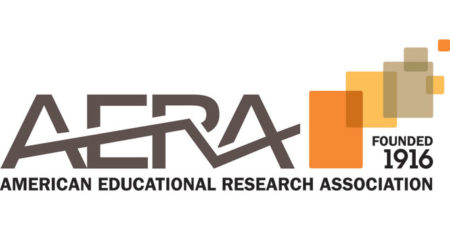
New research paper published from the JOBSTEM project!
A new paper „How
important is it to my parents? Transmission of STEM academic values: the role
of parents’ values and practices and children’s perceptions of parental
influences“ written as part of the JOBSTEM project, has been published in
the „International Journal of Science
Education“. The study described in the publication deals with the students'
and their parents' beliefs about the importance of success in STEM school
subjects and the beliefs about the usefulness of these subjects, as well as the
levels of encouraging interests in the domain in their immediate family. Our results
show that students' perception of their parents' valuation of STEM and their
perception of their family's encouragement of STEM interests was the best predictor
of students' beliefs about the usefulness and importance of STEM subjects. These
perceptions were, for the most part, incongruent with the parents' self-reports
of these beliefs and behaviors. The students' skewed perception of their
parents' values might be part of the reason why parental STEM values are
relatively weakly correlated with their children's. Our results further suggest
that parents find it easier to impart beliefs about the usefulness of STEM
school subjects than those about the importance of high achievements in the
STEM school domain. The paper discusses theoretical and practical implications
of these results.
You can find the full text at:
https://www.tandfonline.com/doi/full/10.1080/09500693.2018.1460696?scroll=top&needAccess=true
Last testing wave of the JOBSTEM project comes to an end
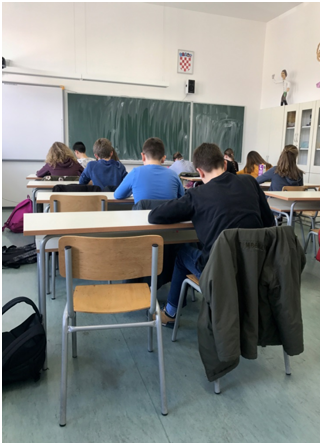
Advanced STEM program carried out for for gifted highschool students
The planned STEM „camp“ for gifted student was
carried out as part of the „Be STEMpatic!“ project, with 10 students from
highschools in the Virovitica-Podravina county. The camp took place from the
2nd to the 4th of March at the Information and Education Centre „Noskovačka
Dubrava“, a public institution which governs the county's natural resources. The
representatives of the county opened the Camp by expressing their delight at
the opportunity to host such a unique program which is the first of its kind
when it comes to gifted students in the STEM domain in Croatia, in their midst.
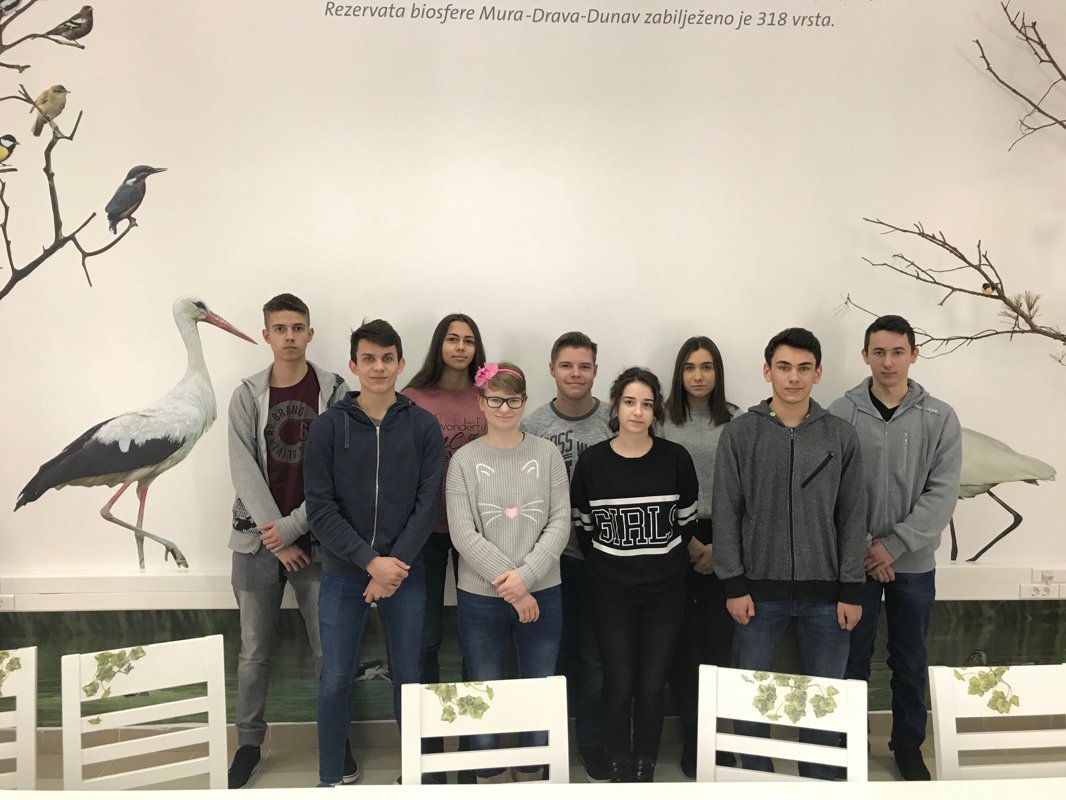
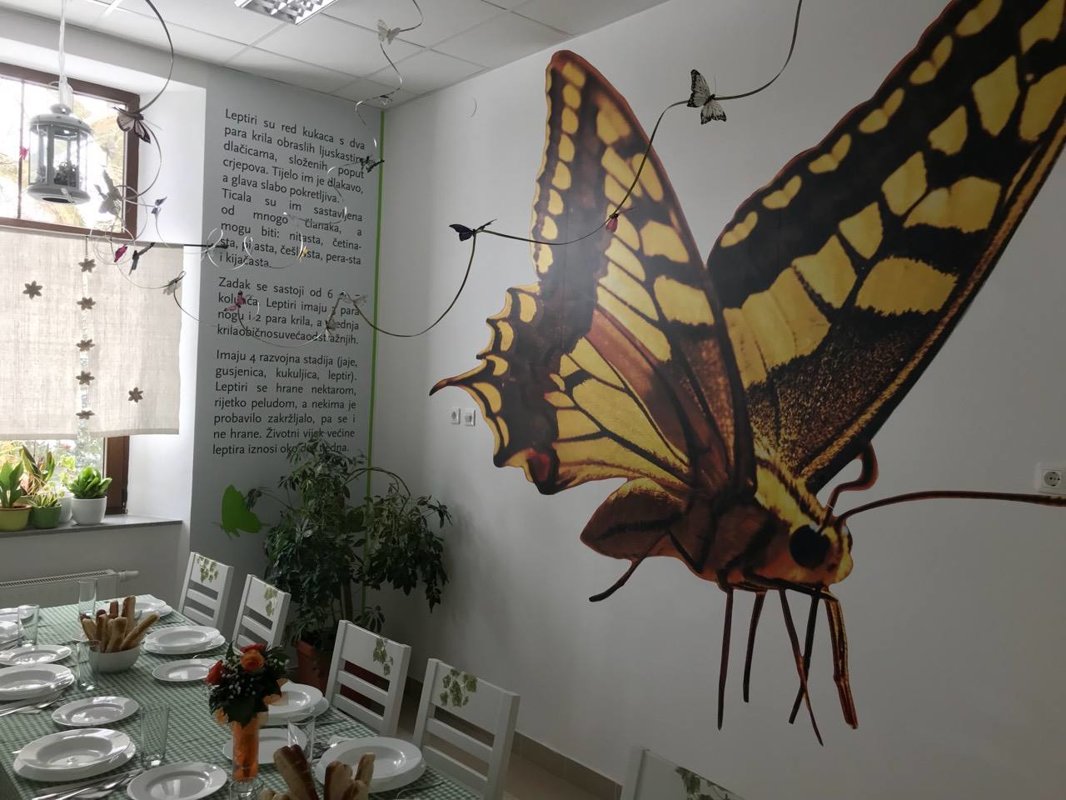
Seven workshops were carried out in the duration of
the Camp, which included topics such as: „Assemble and breathe life into your
robot“, „Competition of robot performance in different tasks“, „Atomic cores,
everywhere around us“, „Chemistry – the less, the better“, „Electricity without
dinosaurs“, „What are my interests and what is best for my future: A vocational
guidance workshop“. The workshops were lead by
scientists from the Faculty of Electrical Engineering and Computing (FER), the
Ruđer Bošković Institute in Zagreb and the Institute of Social Sciences in
Zagreb.
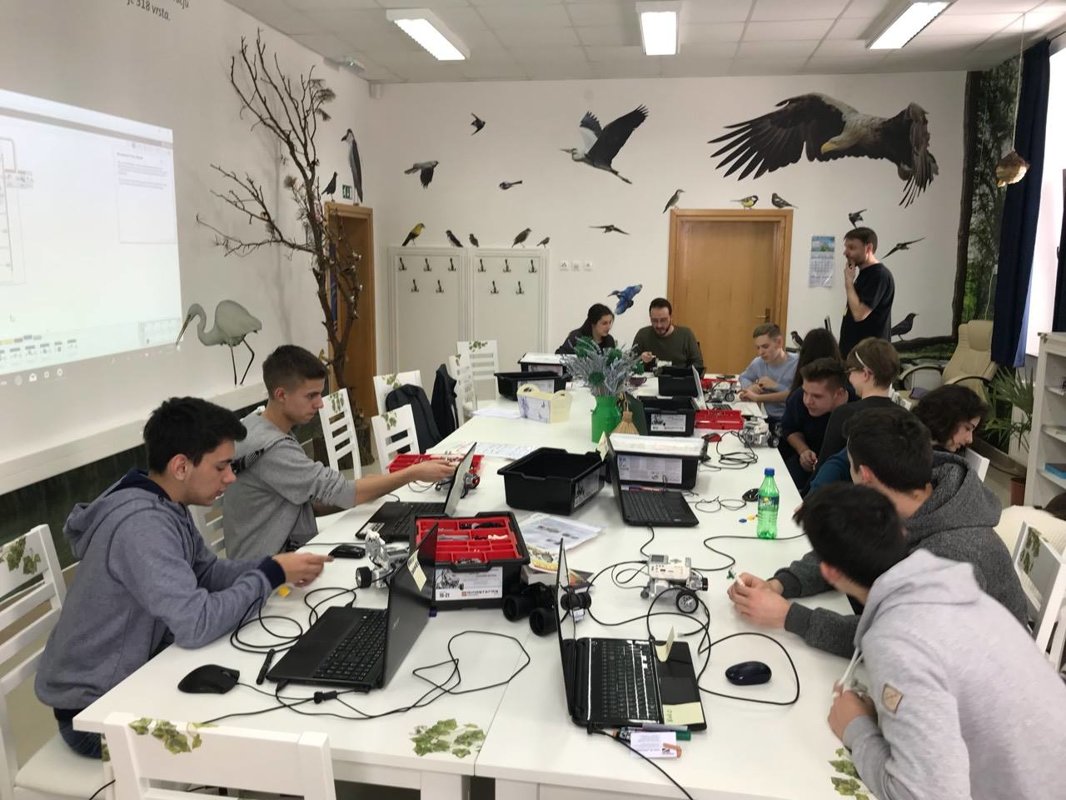
The
participants of the first STEM gifted students Camp were selected based on the
Model of identification of STEM giftedness, which was developed for the
project. The students were selected from a pool of approximately 200 potential
candidates, who were also highschool students. Tens of measures were collected
via testing about all the candidates, and only ten were selected based on the
criteria of the postulated model of STEM giftedness. Apart from the results of
psyhological tests and STEM knowledge measures, the researchers had access to
additional information about the candidates (such as their current and past grades).
Conversations with the students in the camp and their teachers showed that most
of the candidates had participated in national, regional and other highly
selective competitions which exist in the educational system. STEM gifted!

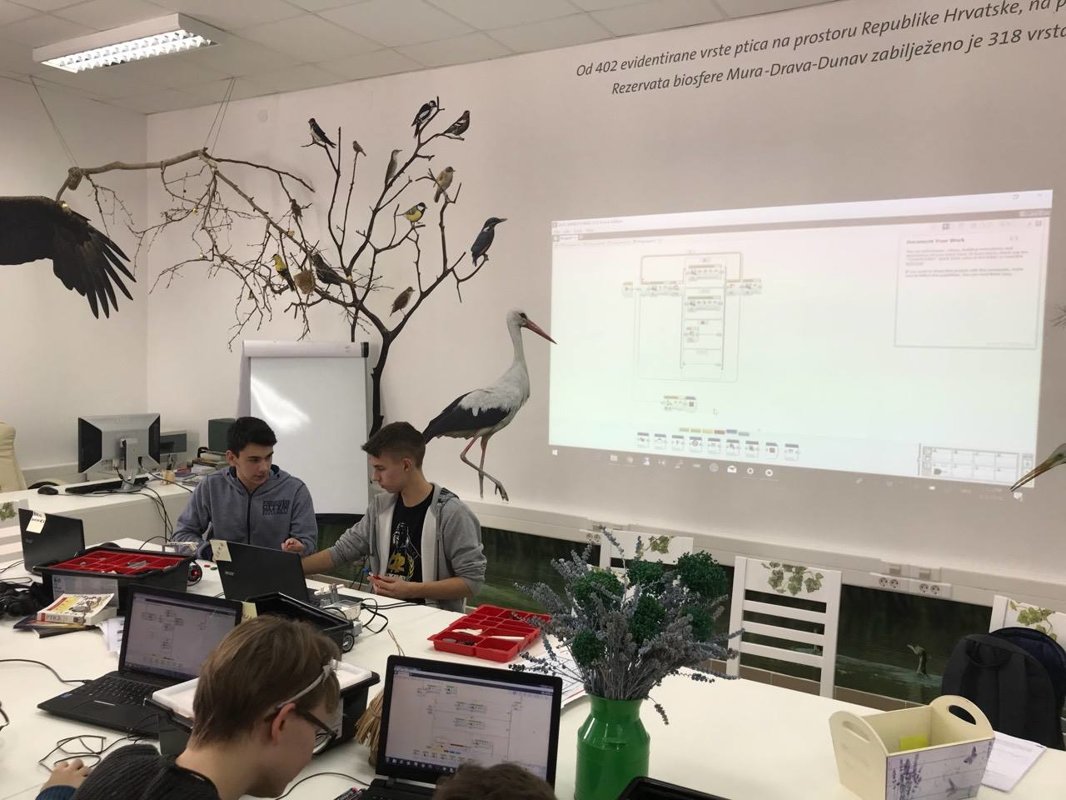
Vienna study trip of the „Be STEMpatic!“ project
As part of
the activities of the „Be STEMpatic!“ project, a study trip to the city of
Vienna was organized for the representatives from 14 partner elementary schools
and 7 partner highschools from the Virovitica-Podravina county, from the 14th
to the 16th of February 2018.
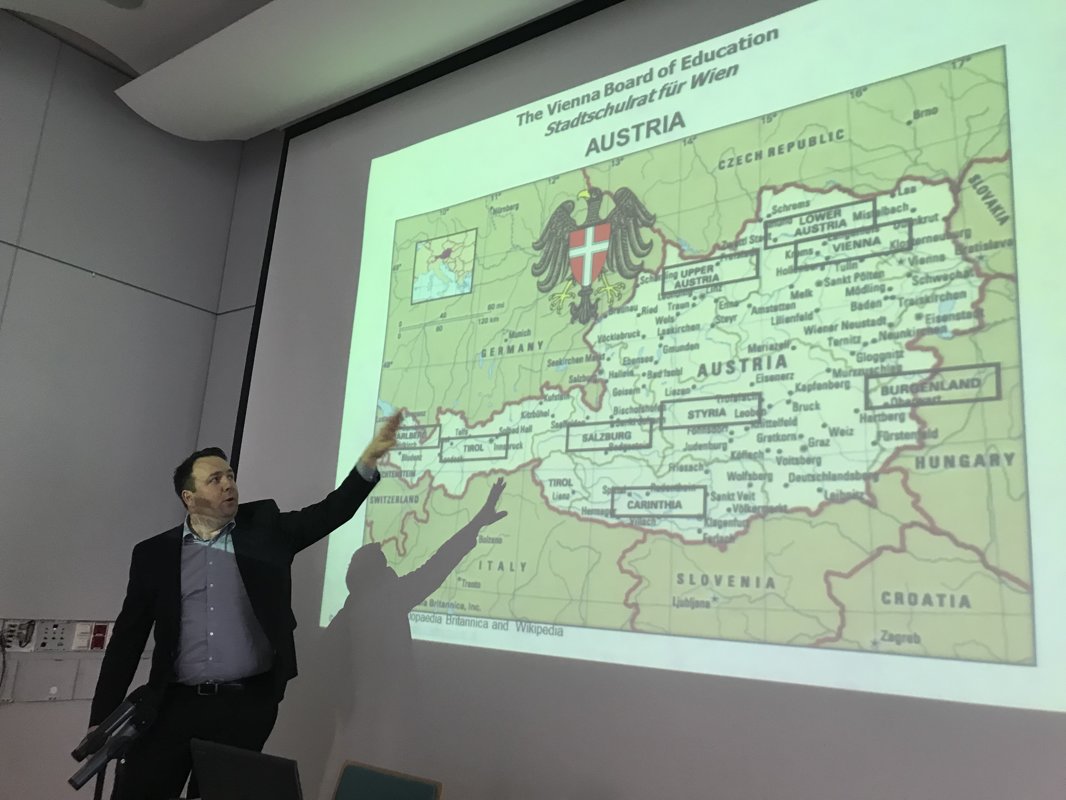
The participants
visited the Regional Education Board for Vienna (Stadtschulrat für Wien) where they were familiarized with the
educational system of the city of Vienna, the functioning of its elementary schools
and highschools, as well as new initiatives and programs aimed at modernizing
teaching. A visit to the Institut für
Unterrichts- und Schulentwicklung (IUS), a network Austrian institution
which functions in several regional centres,
followed, where participants heard about recent Austrian projects in the STEM
area, the development of the regional centres of competence in the domain, and the
development of regional networks of excellence in desirable practices of
teaching STEM school subjects.
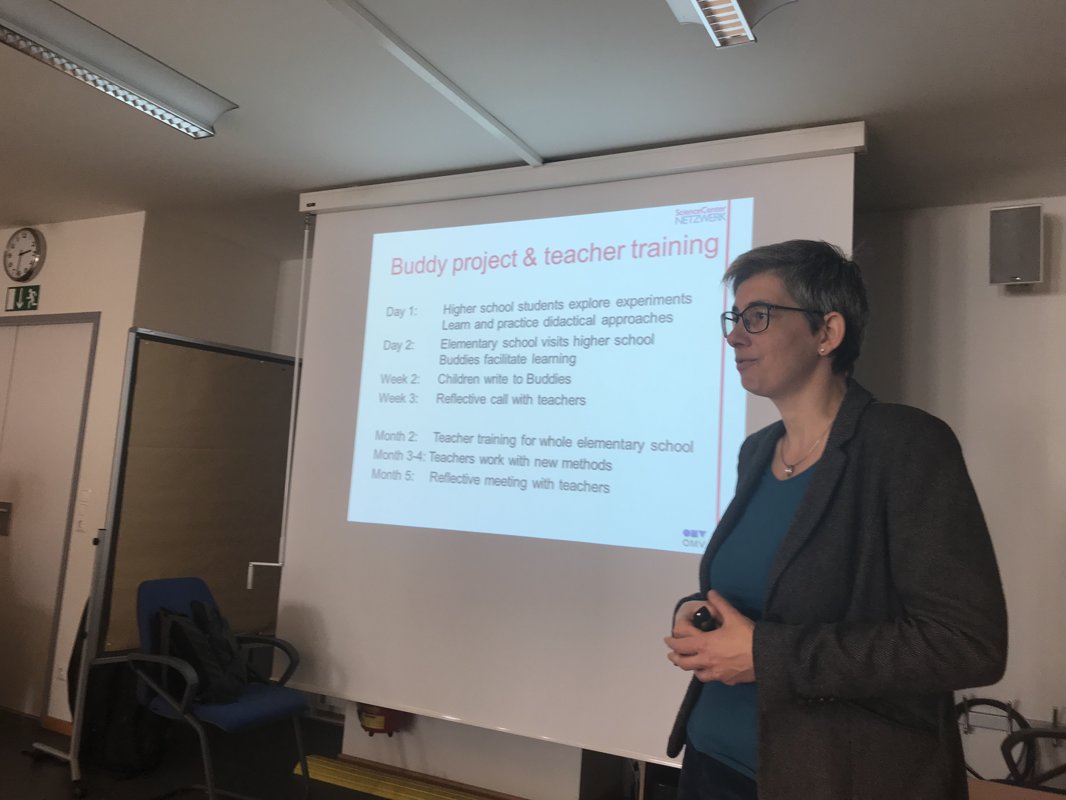
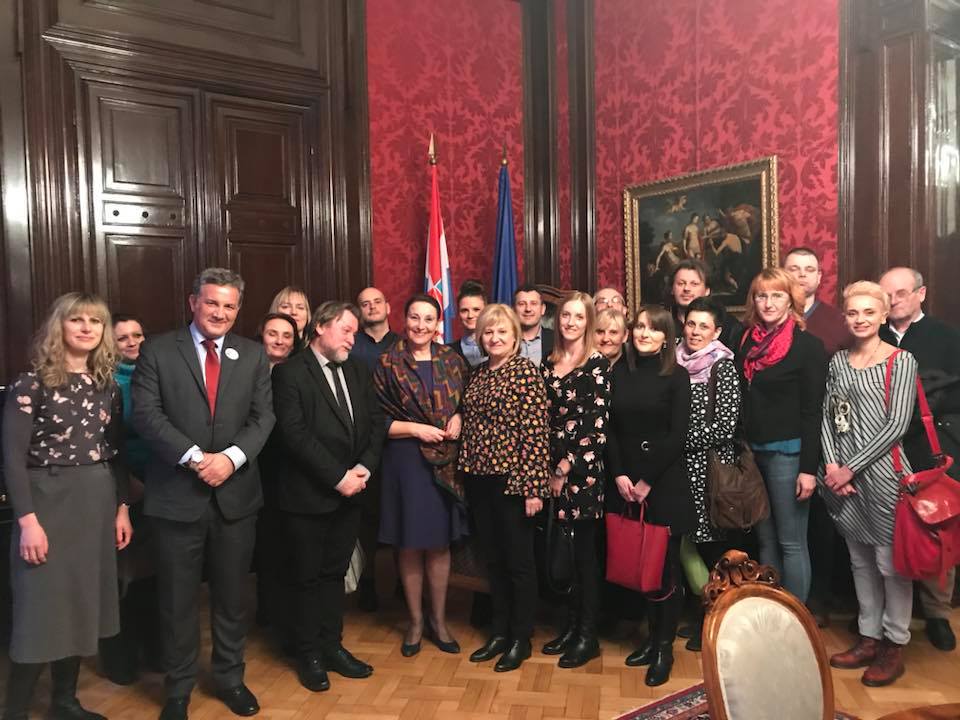
Identification of gifted students finished in the „Be STEMpatic!“ project
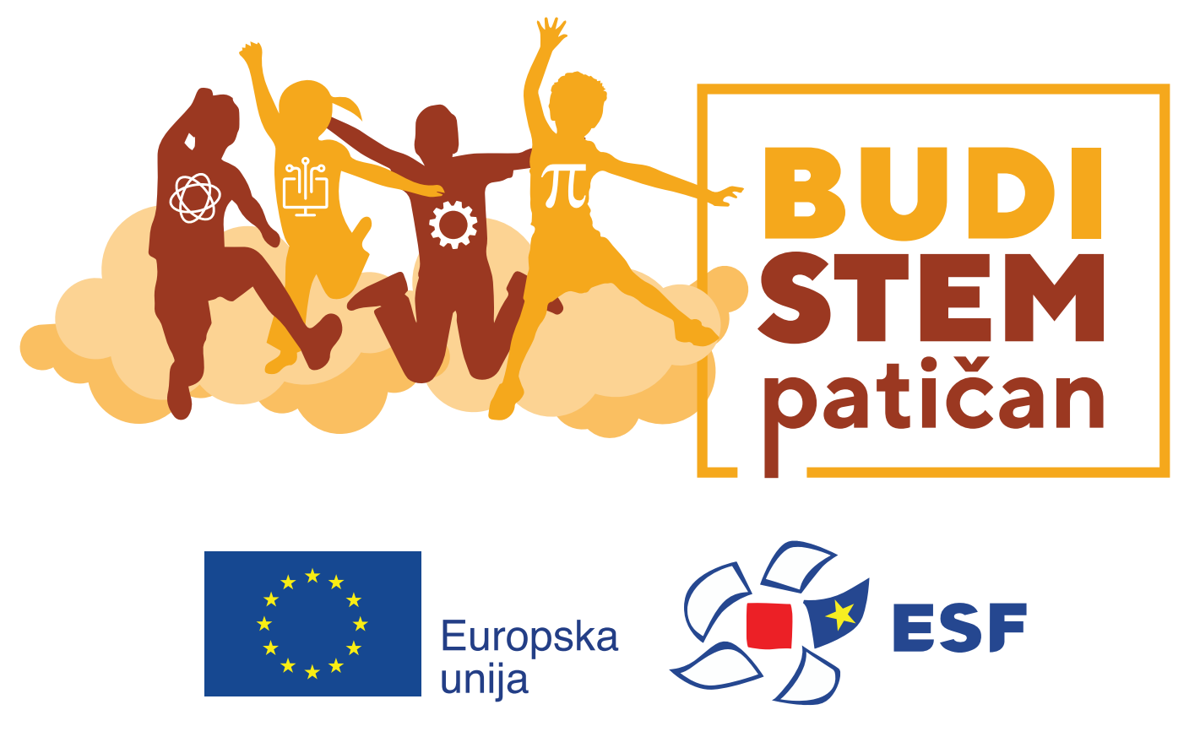
The testing of students from
partner schools on the „Be STEMpatic!“ project in the Virovitica-Podravina
county was finalized last month. The project is focused on identifying, following
and working with students gifted in STEM domains, and is being carried out in 14
elementary schools and 7 high schools. Members of the JOBSTEM research team
came up with and participated in the implementation of the comprehensive
identification procedure which started in November of 2017 in the role of the
project's expert advisors. Apart from gathering teachers' suggestions, the
identification procedure included the collection of data on general, spatial
and numerical intelligence, measures of motivational constructs and creativity
in STEM areas, as well as an objective test of knowledge of the STEM domains.
Results of the JOBSTEM project presented at the „The International Congress for School Effectiveness and Improvement“ in Singapore
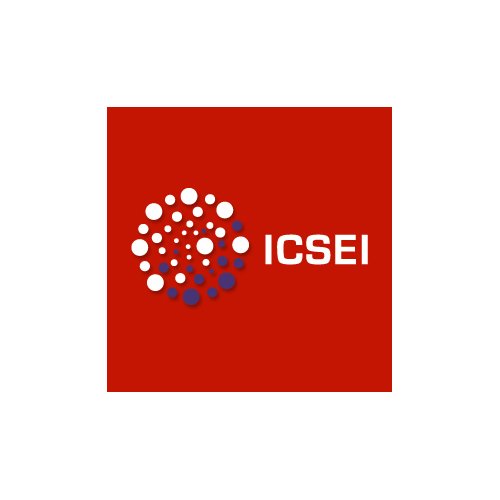
Third annual meeting of the project team concluded!
Collaboration established with the Virovitica-Podravina county on the „Be STEMpatic!“ project
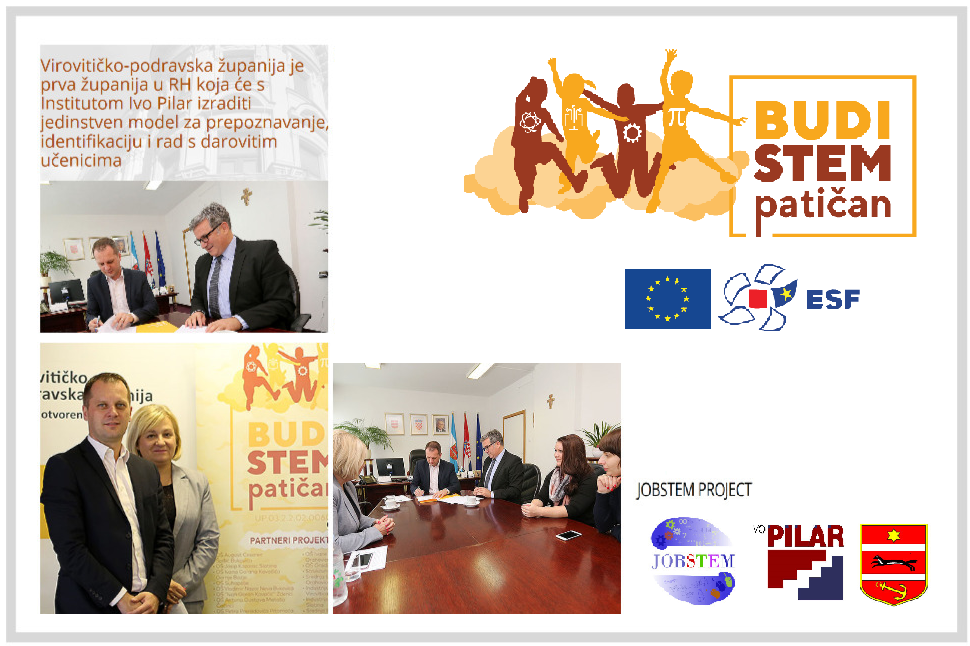
The „Be STEMpatic!“ project is financed by the European Social Fund, related to the call for proposals „Encouraging work with gifted children and students at the pre-tertiary level“. The project will last for 16 months, and be implemented by the Virovitica-Podravina county in cooperation with 14 elementary schools and 7 high-schools.
The Institute of Social Sciences Ivo Pilar will also collaborate on a number of project activities which concern the development and evaluation of models used to identify gifted students in the STEM domain.
The JOBSTEM team can offer expert insight and evidence-based recommendations to aid in the successful completion of these activities. This collaboration presents an opportunity to use the research findings from the JOBSTEM project and implement them in practice through translating scientific observations directly into the educational process, thus addressing the concrete educational needs in the STEM domain.
A new publication from the JOBSTEM project is out!
A new research paper, „Predicting gender-STEM stereotyped beliefs among boys and girls from prior school achievement and interest in STEM school subjects“ was published in the international journal „Social Psychology of Education“.
Summary of project activities during the second year
28th of April: ASPIRES + JOBSTEM, Professor Louise Archer and Professor Josip Burusic meet to discuss STEM research
More on the ASPIRES project
The ASPIRES
project is longitudinal UK study combining two phase of project – ASPIRES 1 and
ASPIRES2. The first ASPIRES study tracked the development of young people's
science and career aspirations from age 10-14 (from 2009-2013).
The ASPIRES 1
was a five-year study funded by the Economic and Social Research Council
(ESRC), Research grant number RES-179-25-0008, as part of the Targeted
Initiative on Science and Mathematics Education (TISME), a research programme
funded by the ESRC in partnership with the Institute of Physics, Gatsby
Charitable Foundation and the Association for Science Education
(tismescienceandmaths.org).
The
study combines quantitative online surveys of a student cohort and repeat
(longitudinal) interviews with a selected sub-sample of students and their
parents. Survey and interview data were collected at three time points: the end
of primary school (age 10/11, Year 6), the second year of secondary school (age
12/13, Year 8) and the third year of secondary school (age 13/14, Year 9). In
total, over 19,000 surveys were completed: 9,319 by Year 6 students, 5,634 by
Year 8 students and 4,600 by Year 9 students. A sample of 83 students and 65 of
their parents were also longitudinally tracked via interviews across this age
range (10-14). In addition to researching influences on students’ aspirations,
the project also worked
with
a small group of London teachers to develop approaches for integrating STEM
careers information into Key Stage 3 Science lessons.
ASPIRES 2 is continuing to track young people until age 19, to understand the changing influences of the family, school, careers education and social identities and inequalities on young people's science and career aspirations.
ASPIRES team are: Professor Louise Archer as the principal Investigator, Professor Becky Francis - co-investigator, Dr Jennifer DeWitt - co-investigator, Professor Jonathan Osborne - co-investigator, Dr Julie Moote - Project Research Associate, Lucy Yeomans - Project PhD Studentship, Emily MacLeod - Project Research Officer.
JOBSTEM team visits "Sampling, Weighting and Estimation in Survey Methodology" workshop (Ljubljana, 24.-25.4.2017.)

Our team members, Ivan Dević and Mara Šimunović, participated
in a workshop aimed at sample design, weighting and parameter estimation at the
Faculty of Social Sciences in Ljubljana, which took place on the 24th
and 25th of April 2017. The workshop, second of its kind, was
organized as part of the EU "Synergies for Europe’s Research
Infrastructures in the Social Sciences" (SERISS) project, which gathers
European researchers from different areas of social sciences. Twenty-five
doctoral students and postdocs from the areas of social sciences and humanities
from all over Europe participated in the workshop, lead by professionals from
the GESIS institute of social sciences in Köln.
The workshop was organized to cover topics pertaining to three
interconnected areas: methods of complex samples selection, designing weights
to address the problem of under-representation of certain groups, and analyzing data
collected on complex, weighted samples. The
first part of the workshop included a lecture on the central concepts of the
topic; such as sample variance, unbiased parameter estimation, stratified
sampling and the problem of allocation, cluster sampling, non-probability sampling
and the design effect. After the theoretical part, there was an introductory practice
session using the R software. The second part of the workshop introduced the
concept and rationale behind weighting in survey designs, and basic weighting
methods like post-stratification and calibration. Practical examples in R were used
to explain the inclusion of weights in parameter estimation with complex
samples, on the data set of the longitudinal international study "The
European Social Survey (ESS)”. There was also time for participants to share
their research experiences and discuss the problems related to the topic at
hand, and unique to the studies they are currently working on.

7th graders visit the Ruđer Bošković Institute to learn about chemistry, environmental research and much more
After our fifth graders visited the Faculty of Mechanical Engineering and Naval Architecture and the sixth graders visited the Faculty of Chemical Engineering and Technology, the seventh graders went to the Ruđer Bošković Institute (IRB) in Zagreb. It’s one of our leading scientific facilities doing research in theoretical and experimental physics, physics and chemistry of materials, electronics, physical and organic chemistry, molecular biology and medicine, sea and the environment, computer sciences, laser and atomic research. During the visit, the students participated in several workshops in the fields of biology, chemistry, physics and environmental studies.
During the workshop „DNA Isolation“, students heard about ongoing research projects at the Department for molecular medicine of the IRB, with a focus on the Laboratory for Neurodegenerative Disease Research. They visited the sterile room for cell research where they got acquainted with the models used to investigate medical questions and a biochemical lab where the grown cells are analyzed. After a short tour of the labs, students were given the chance to isolate the DNA of a banana on their own and learned about the relevant research methods, as well as features and structure of DNA. At the end of the workshop, each student got a souvenir of the visit – the DNA they isolated on their own!
The workshop „What do chemists do?“ focused on showing students different models in chemistry, and with the help of the models and worksheets explained the concept of chirality. The second part of the workshop consisted of several attractive demonstrations which illustrated key concepts in chemistry – physical and chemical changes, acids, lyes and indicators, the composition of air, gas features, etc. – as well as linking chemistry to physics, biology and everyday life.
The second hands-on part was a theoretical quiz in chemical elements and the meaning of the periodic table. Students were asked to produce reactions of water with lithium, sodium and sodium hydride. This was meant to show the similarities between the elements and their hydrides, as well as the differences in reactivity. The observations were discussed with the students, which resulted in jointly achieved insights, which are crucial for understanding chemistry.
The workshop „Matter change at low pressure and temperature“ included a visit to the accelerator and experimental hall where students learned about ion acceleration and the occurrence when ions collide with materials. It was followed by experiments with vacuum and low temperatures, the goal of which was to explain pressure and how the features of materials known to them change with changes in pressure and temperature.
At the Division for Marine and Environmental Research, students participated in the workshop „Geo-chemical features of natural waters – traces in the water“. They were taught about the importance of researching the geo-chemical features of water, and were also given the chance to experience what such research projects entail, namely, the preparation of experiments and their implementation, as well as techniques of different chemical analyses in the laboratory.
Through these workshops, the students revised what they had been previously taught, but also learned a lot from the respective fields in a new and interesting way. The feedback was overwhelmingly positive, and most students showed a great interest in the things they had observed at the Institute.
Students visit the Faculty of Chemical Engineering and Technology
After the successful STEM intervention for fifth-grade
students at the Faculty of Mechanical Engineering and Naval Architecture, it
was sixth-graders' turn to visit the Faculty of Chemical Engineering and Technology
at the University of Zagreb. Two forms from each experimental school were taken
on a tour of three departments – Department of Organic Chemistry, Department of
Analytical Chemistry and the Department of Mechanical and Thermal Process
Engineering.
In groups of ten, the students went through a myriad of interesting exercises, experiment and demos, with the guidance of the Faculty's professors and teaching assistants. For instance, they changed the color of water into purple, blue, green and yellow by using substances such as Manganese peroxide and adding sugar and alkaline crystals. They also had the task of uncovering a hidden picture drawn with colorless acid and alkali indicators, and is revealed by spraying it with an alkaline solution.
Except from water,
the students were also shown how to change the color of flame with the help of
ethanol to which different chemical substances are added. Other interesting
demos involved the quick dissolution of Styrofoam in acetone, using acetone and
dry ice to decrease temperatures below 70 degrees Celsius and create artificial
fog, and producing the so-called „elephant's toothpaste“ with the help of
hydrogen peroxide, liquid soap and artificial coloring.
At the Department of Analytical Chemistry, students
heard a presentation about Teobroma caccao – the plant responsible for everyone's
favorite sweet indulgence, chocolate. They learned about the step-by-step
procedure used to ascertain the level of iron in chocolate, and how it relates
to different qualities of specific types of the product. There was also talk
about chromatography and how it can be used to discover the colors needed to
produce different shades of felt-tip pens on paper, and make interesting
colorful shapes.
At the Department for Mechanical and Thermal Process
Engineering, different varieties of crystals, such as snowflakes and salt
crystals, were the main attraction: apart from hearing about them, students were
also given the chance to observe them through microscopes.
During these
workshops, students were given the opportunity to get acquainted with Chemistry
before its inclusion in their school curriculum, and to see how useful, as well
as fun and interesting, it can be.
Students visit the Faculty of Mechanical Engineering and Naval Architecture
In the period between the 23rd and 27th of January, students from the eight experimental schools visited the Faculty of Mechanical Engineering and Naval Architecture at the University of Zagreb, accompanied by their class-teachers. Two fifth grades from each school participated in the visit.
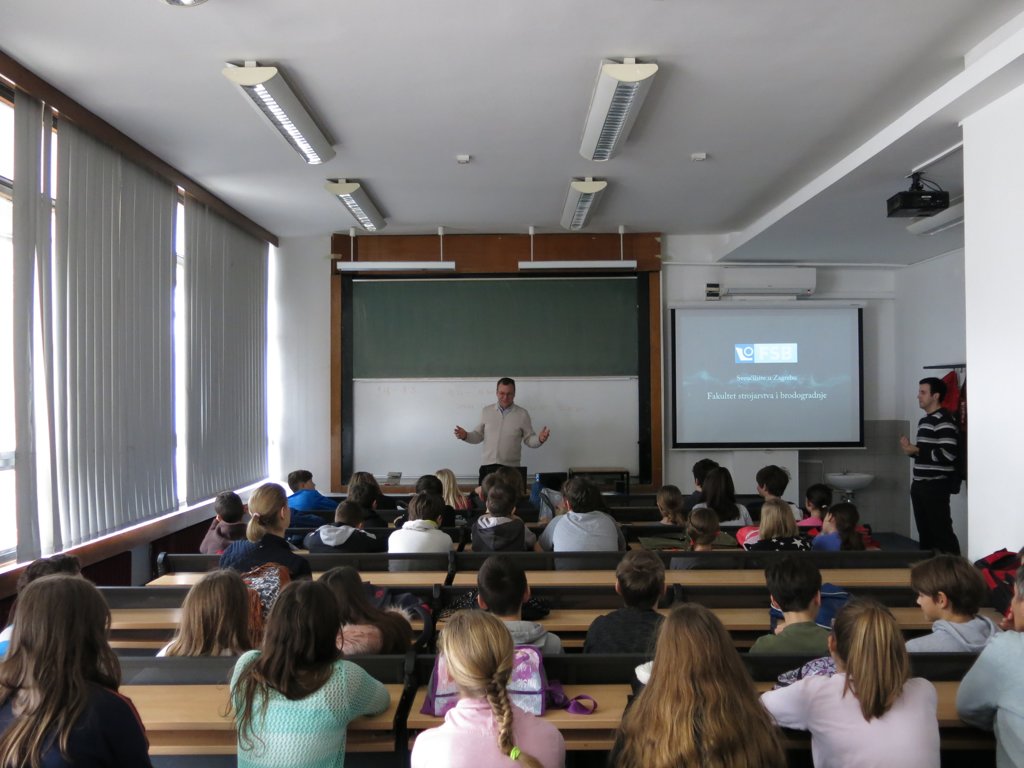
After a welcome speech given by the Faculty's representative, the students were shown an educational video which served to better acquaint them with the type of programs on offer, the skills future graduates acquire, and the jobs which they can later do. Students then visited some of the laboratories where they received short demonstrations and lectures about the different domains in mechanical, naval and aeronautical engineering; the research of the labs; as well as the applications of technological solutions to the wider scope of human activities.

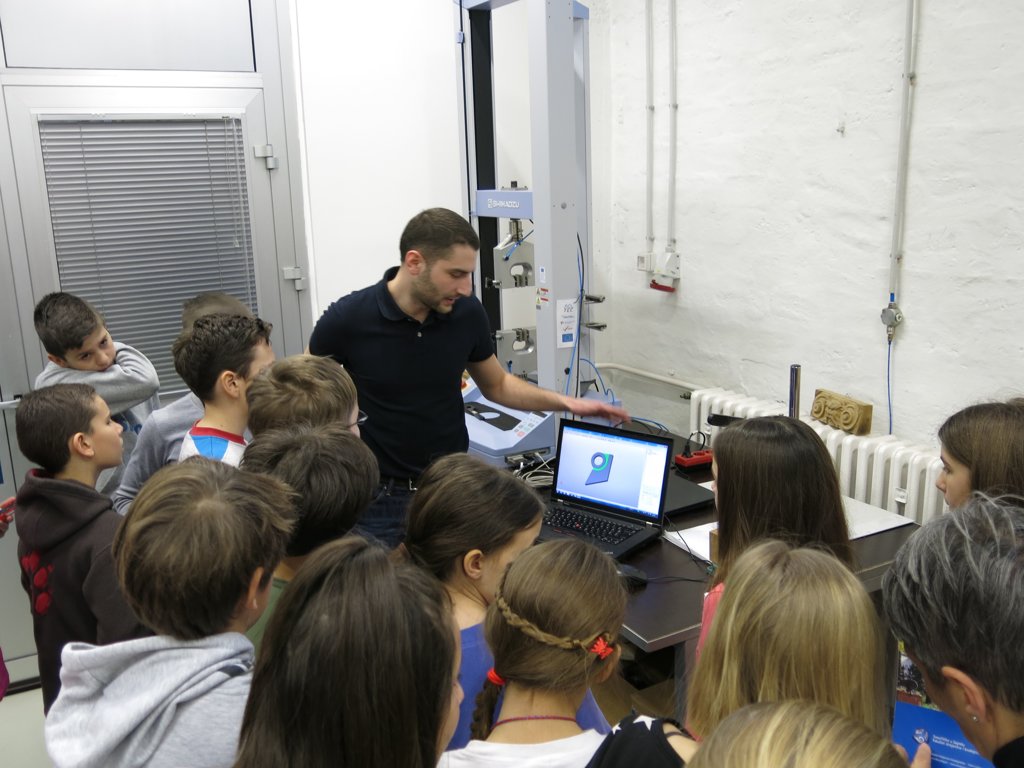
For
instance, at the Department of Robotics and Automation of Manufacturing Systems,
they had the opportunity to watch a video about the robot Ronni, built at the
Faculty, used in complex neurosurgical interventions. They also observed the
speed of the start up of a robot used in the auto industry, as well as a packing
robot who can replace human workers on an industrial packaging line. In their
visit to the CADLab, they were taught about the development processes of
different products. Students were given a chance to see a 3-D printer at work,
one which can produce the most complex geometrical shapes by applying so-called
additive technology (adding materials layer by layer). Guided by the
professors, students also controlled a robot using a mobile application and
could test different automated machines.At the Department of Aeronautical Engineering,
they were acquainted with several types of unmanned aerial vehicles and their
application in terrain surveillance.
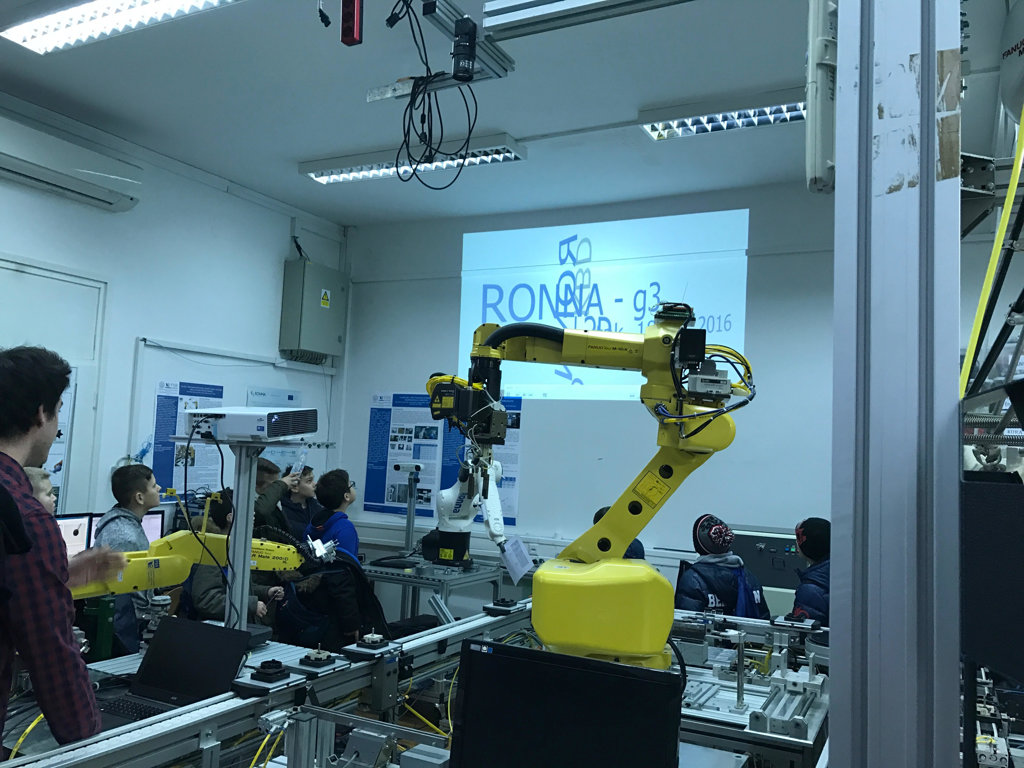

Except
for the aforementioned, the visit included a couple of other departments and
laboratories, such as the Power Engineering Laboratory, Laboratory for Welding,
and the Laboratory for Production and
Assembly Systems Design. Students were encouraged to ask questions of the
professionals and teachers of the Faculty, and were given the opportunity to engage
with some of the presented processes through games and teamwork. A follow-up
with the students and teachers showed that their interest in the presented
materials was high, and their impressions of the overall visit were extremely positive.
Second Wave of Interventions Take Place in Experimental Schools
After last year's successful interventions
which allowed experimental school students to engage in a myriad of
entertaining and educational STEM-related activities, the new wave of
interventions took off in November 2016 for students in 5th, 6th and 7th grades.
The
first workshop, called „Networks, computers and the Internet“ was carried out
as a combination of lectures, discussions, research and practical exercises
which served to introduce students to the functioning and complexities of
computer networks and the Internet. The main aim was to provide them with a deeper
insight into the key concepts of the Internet, such as internet protocols (IP),
IP addresses, IP packages, routers, nodes, etc.
In
order to help students better consolidate the learning materials, the workshop
linked to the previous intervention in which they had encountered the basics of
computer programming by asking them to write a program for generating pictures they'd
received and send them through the network to a classmate. Thus, the students
were given the opportunity to combine their previous knowledge of programming
and apply it to the new information they received about the functioning of
computer networks.
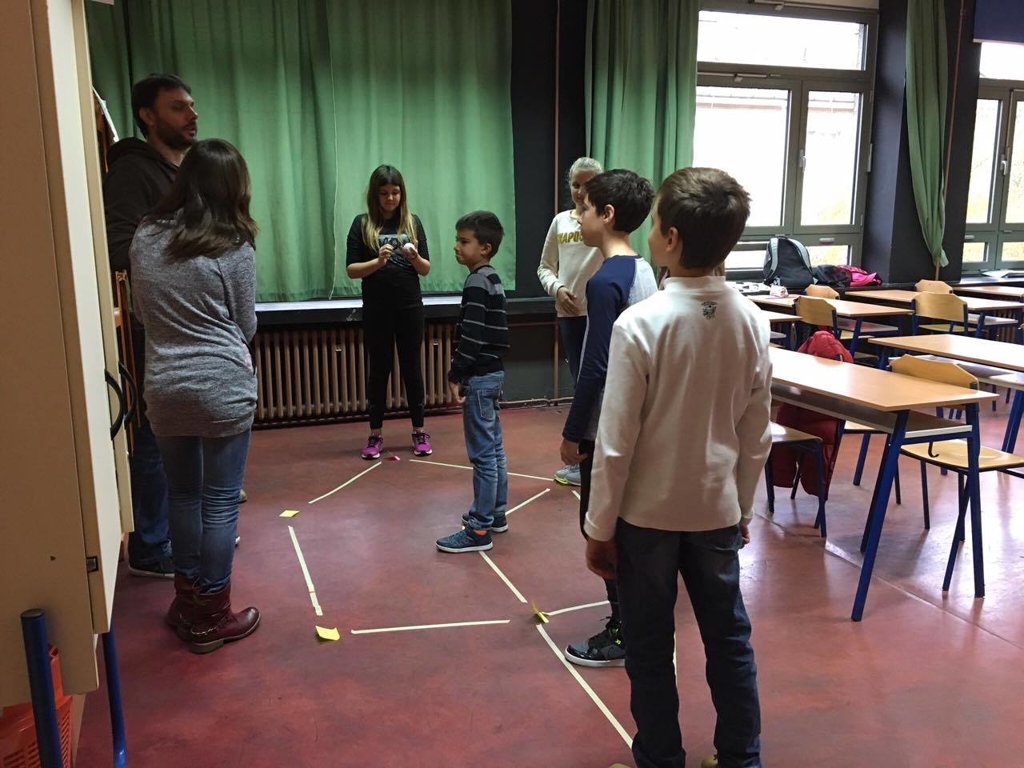
The
second workshop was titled „LittleBits“ and incorporated topics from the basics
of electronics and robotics. LittleBits
educational sets were used for this purpose, consisting of colorful electronic
components such as power supplies, LED diodes, keyboards, sliding
potentiometers, inverters, pulse generators, different sensors and motors, and
others. Students can connect these components using magnets to create closed
circuits and learn about the principles of electronics and the different
components in a simple and straightforward way.
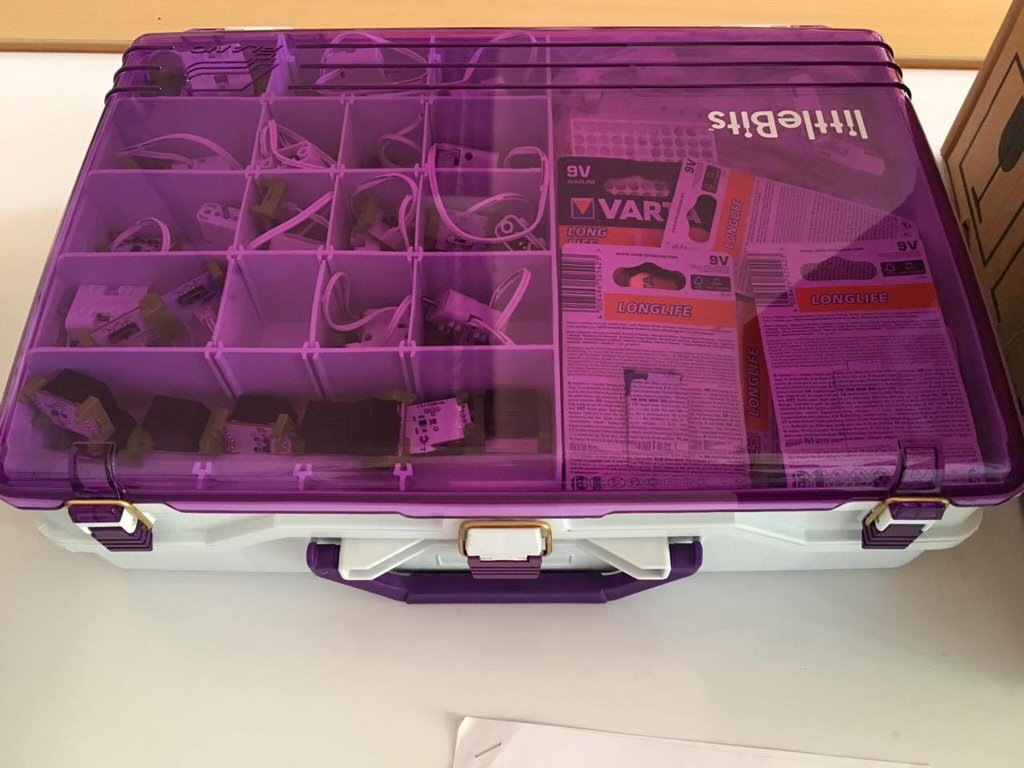
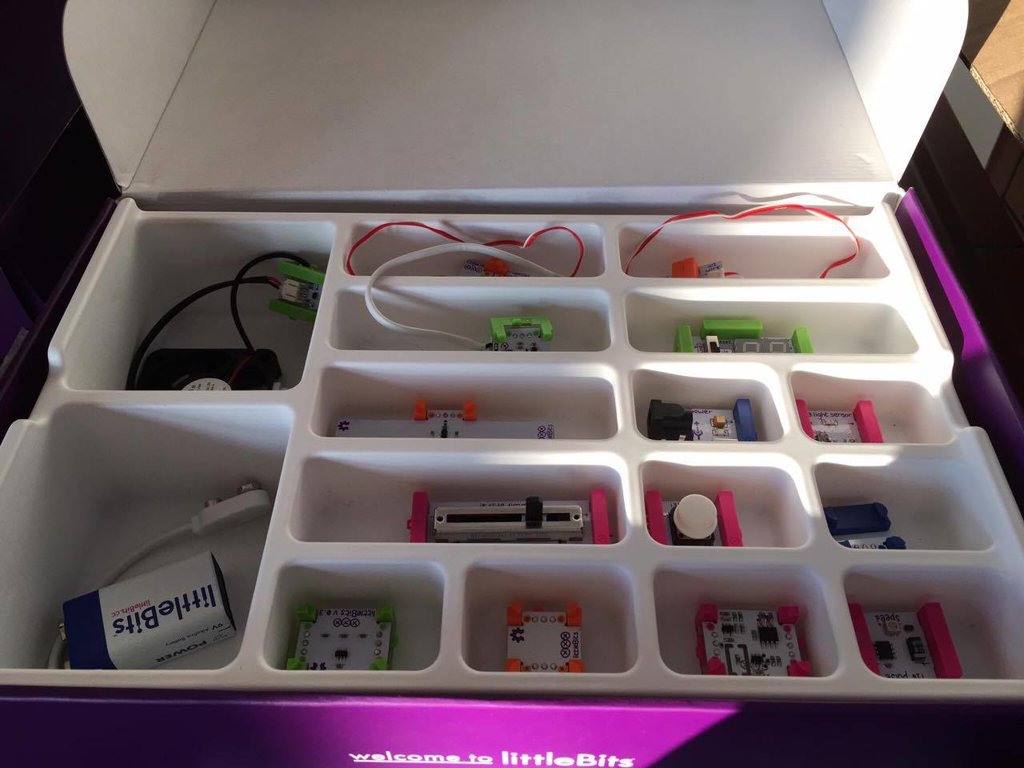
For the end of the exercise, students
created a small electric car with self-ignition, and could try out the
different effects of the sensors, wheel rotation, and the like on the behavior
of the car. The workshop presented students with an opportunity to build up on
their knowledge by starting from very simple to gradually more complex tasks
and make their own logical assumptions about the correct ordering of the
components in the block and their effect on the rest of the circuit. The
workshop was organized in groups of three or four students, which also served
to show the importance of team work and sharing ideas in a group.
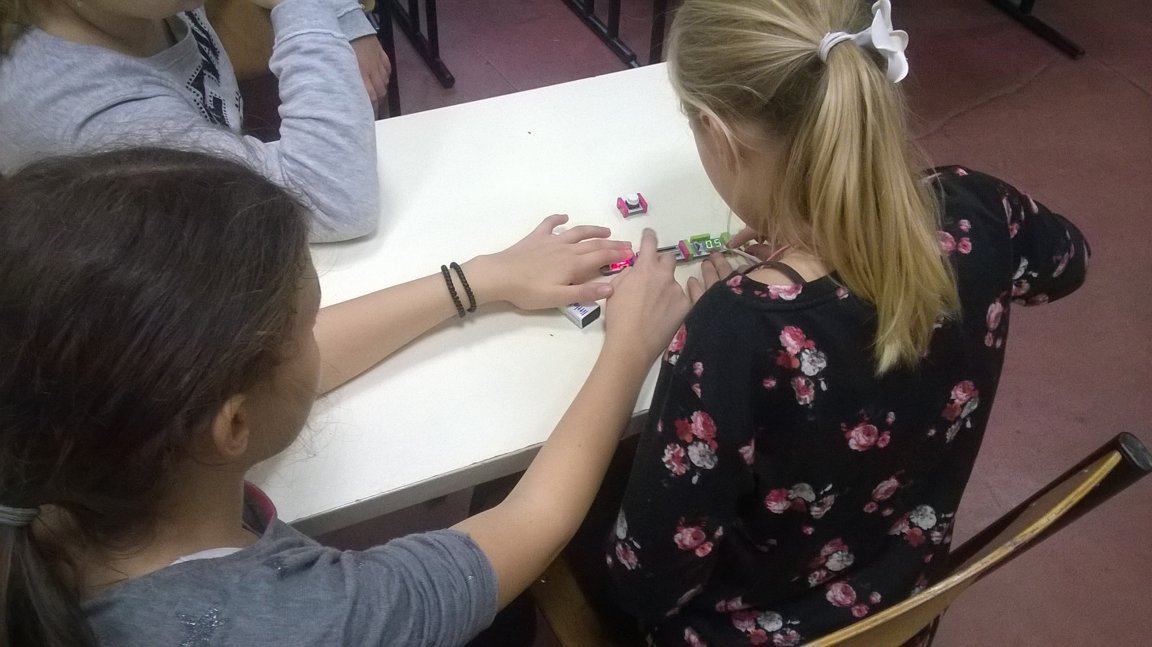
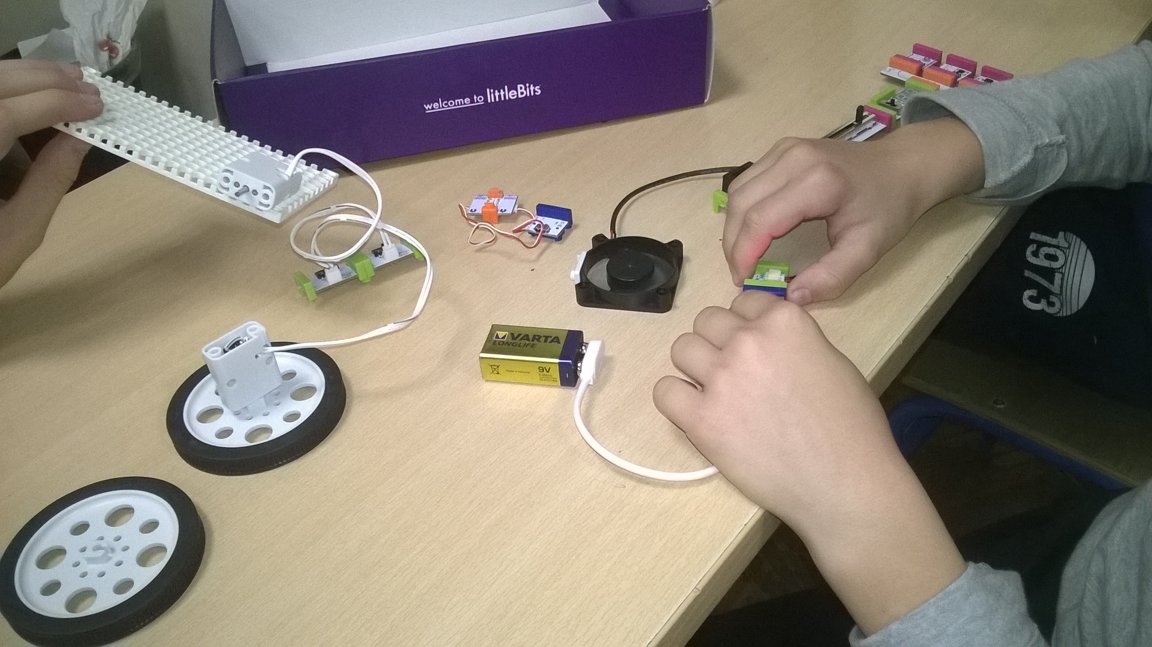
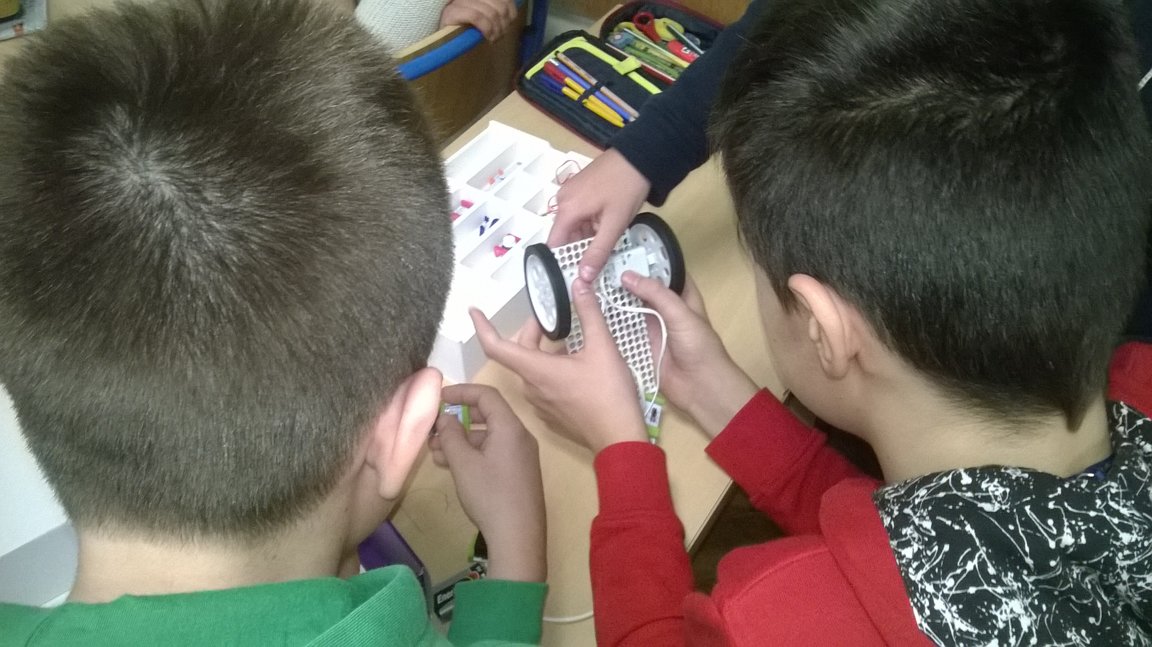
Researchers
from the Faculty of Electrical Engineering and Computing conducted the two
workshops (Tomislav Jagušt and Juraj Petrović in ˝Networks, computers and the
Internet ; Ivan Kunović in LittleBits). Collaborators from the Ivo Pilar
institute also assisted in the implementation (Ivan Dević, Mara Šimunović), as
well as student volunteers.
JOBSTEM PL meets with President Kolinda Grabar Kitarović
The president of Croatia, Ms Kolinda Grabar Kitarović, held a meeting with the JOBSTEM project leader, prof.dr.sc. Josip Burušić. JOBSTEM (fully titled „ "STEM career aspirations during primary schooling“) is a research project financed by the Croatian science foundation, bringing together a large team spanning four countries. The project leader gave the president a brief overview of the research activities currently underway in STEM fields, and shared some insights about the state of the Croatian educational system. President Grabar-Kitarović showed a great interest for the topics and challenges in education, especially its focus on STEM fields. In this light, there was talk of further numerous possibilities for activities in the domain. The conversation also touched upon similar activities, for which interest has been shown by prestigious research institutions and universities in Croatia, and more globally, as well.
Research report: Attitudes toward school science in explaining achievement in STEM-related school subjects
Below, we present the third JOBSTEM study from the ECER conference in Dublin, titled The contribution of attitudes toward school science in explanation of achievement in STEM school subjects (authors: Ivan Devic, Toni Babarovic, Mia Karabegovic, Mirta Blazev & Dubravka Glasnovic Gracin). Find the previous two posts here and here.
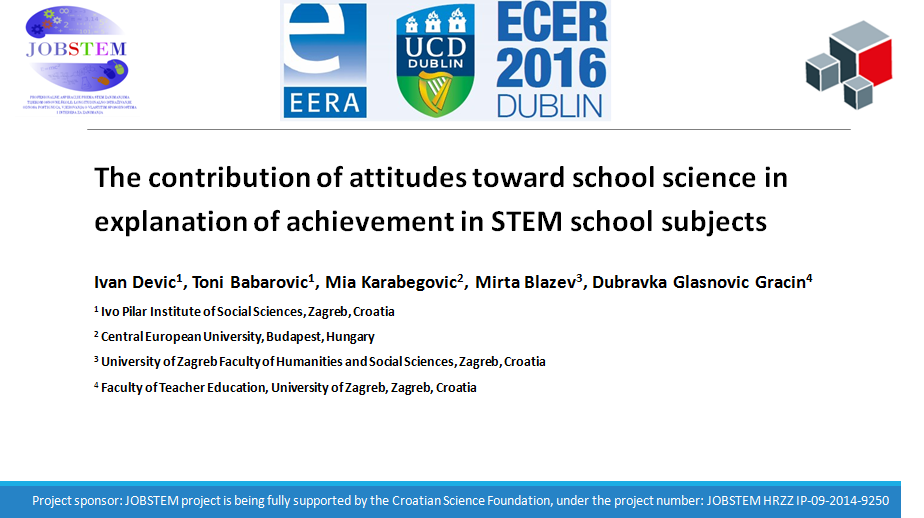
STEM achievement of Croatian students has consistently been shown to be low in comparison to their other school subjects - in both specific scientific studies (Burušić,
Babarović, & Šakić, 2008), and larger international research projects (e.g.
PISA). The debates about what
determines achievement in STEM school subjects in primary school still persist.
Several STEM-relevant variables show a significant association with achievement
in math and science, including student level variables, school level variables
and variables related to their broader social environment (Hattie, 2009).
The
specific aim of our study was to identify the contribution of students’
attitudes to school science and experiences with STEM subjects in explaining
STEM school achievement, after controlling for individual characteristics,
family-related variables and experiences in out-of-school activities. The
variables used correspond to Huitt’s (2003) Transactional model of the
teaching/learning process, a framework which posits several different domains
which produce learning outcomes: input (students’ and teachers’ individual
characteristics), context (environmental factors that might have an influence
on the outcome) and classroom processes.
Study Design
We collected data from 360 primary school students (aged 12 to 15; M=13.32; 165 female) enrolled in three schools from the Daruvar municipality, Croatia. Scales used as predictors in the survey were mostly derived and adapted from the ASPIRES project (Archer et al., 2013; DeWitt et al., 2013), and the output, STEM school achievement, was measured as a composite of school marks (GPA) in different STEM subjects in the previous grade.
The predictors used in the study encompassed students’ gender, the education
status of their parents, parental ambitions and support of the students’
education, parents’ attitudes toward science, students’ positive and negative image
of scientists, interest in science outside of the school context, and attitudes
toward school science.
Hierarchical regression analysis was applied in order to predict achievement in STEM school subjects, with the first block of predictors pertaining to input and contextual variables, and the second block being the attitudes toward science in the school context.
Short Summary: Main Results
- Girls
have slightly (but significantly) higher achievement in STEM subjects than boys
(r = .16,
p < .05). - STEM
achievement is related to parental education, and parental ambitions and
support. However, its relation to out of school STEM activities, and perception
of scientists is not as pronounced.
- Attitudes
toward school science, a variable reflective of Huitt’s classroom processes concept, was an important predictor of STEM school
achievement, in that it added a significant proportion of the variance
accounted for by the model, above and beyond the personal and contextual factors considered.
_______________________________________________________________________
References used in the post
Huitt, W. (2003). A transactional model of the teaching/learning process: A summary. Educational Psychology Interactive. Valdosta, GA: Valdosta State University.